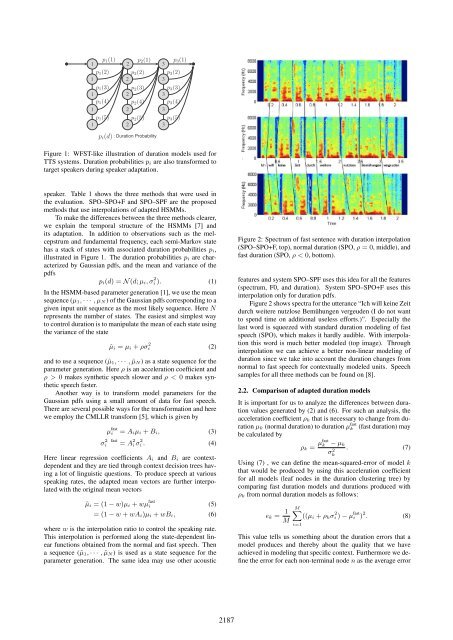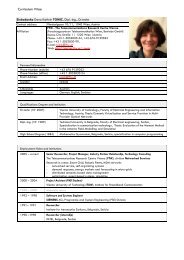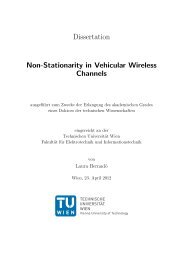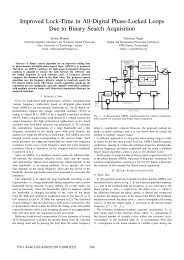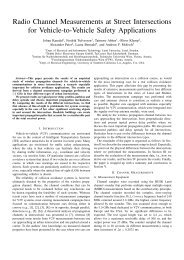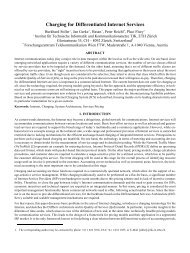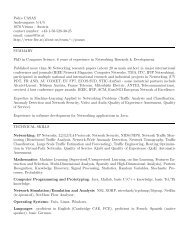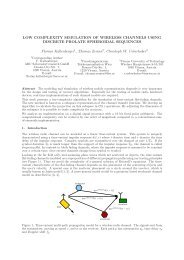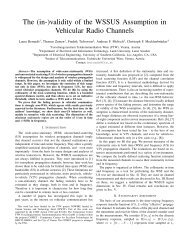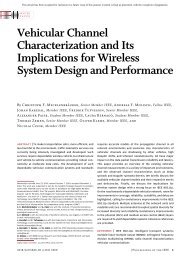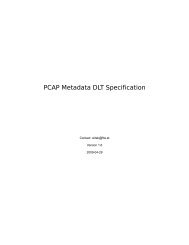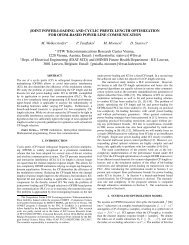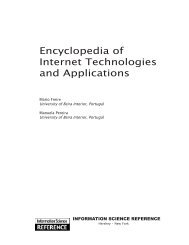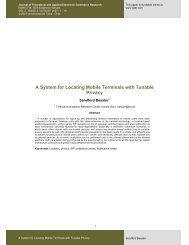Synthesis of Fast Speech with Interpolation of Adapted HSMMs and ...
Synthesis of Fast Speech with Interpolation of Adapted HSMMs and ...
Synthesis of Fast Speech with Interpolation of Adapted HSMMs and ...
You also want an ePaper? Increase the reach of your titles
YUMPU automatically turns print PDFs into web optimized ePapers that Google loves.
p1(1)<br />
1<br />
p1(2)<br />
1<br />
p1(3)<br />
1<br />
p1(4)<br />
1<br />
p1(5)<br />
1<br />
pi(d)<br />
p2(1)<br />
2<br />
p2(2)<br />
2<br />
p2(3)<br />
2<br />
p2(4)<br />
2<br />
p2(5)<br />
2<br />
: Duration Probability<br />
p3(1)<br />
3<br />
p3(2)<br />
3<br />
p3(3)<br />
3<br />
p3(4)<br />
3<br />
p3(5)<br />
3<br />
Figure 1: WFST-like illustration <strong>of</strong> duration models used for<br />
TTS systems. Duration probabilities pi are also transformed to<br />
target speakers during speaker adaptation.<br />
speaker. Table 1 shows the three methods that were used in<br />
the evaluation. SPO–SPO+F <strong>and</strong> SPO–SPF are the proposed<br />
methods that use interpolations <strong>of</strong> adapted <strong>HSMMs</strong>.<br />
To make the differences between the three methods clearer,<br />
we explain the temporal structure <strong>of</strong> the <strong>HSMMs</strong> [7] <strong>and</strong><br />
its adaptation. In addition to observations such as the melcepstrum<br />
<strong>and</strong> fundamental frequency, each semi-Markov state<br />
has a stack <strong>of</strong> states <strong>with</strong> associated duration probabilities pi,<br />
illustrated in Figure 1. The duration probabilities pi are characterized<br />
by Gaussian pdfs, <strong>and</strong> the mean <strong>and</strong> variance <strong>of</strong> the<br />
pdfs<br />
pi(d) =N (d; μi,σ 2 i ). (1)<br />
In the HSMM-based parameter generation [1], we use the mean<br />
sequence (μ1, ··· ,μN ) <strong>of</strong> the Gaussian pdfs corresponding to a<br />
given input unit sequence as the most likely sequence. Here N<br />
represents the number <strong>of</strong> states. The easiest <strong>and</strong> simplest way<br />
to control duration is to manipulate the mean <strong>of</strong> each state using<br />
the variance <strong>of</strong> the state<br />
ˆμi = μi + ρσ 2 i<br />
<strong>and</strong> to use a sequence (ˆμ1, ··· , ˆμN ) as a state sequence for the<br />
parameter generation. Here ρ is an acceleration coefficient <strong>and</strong><br />
ρ>0 makes synthetic speech slower <strong>and</strong> ρ


